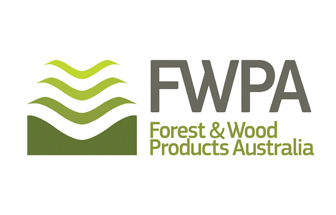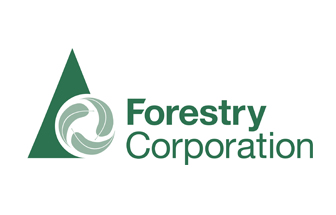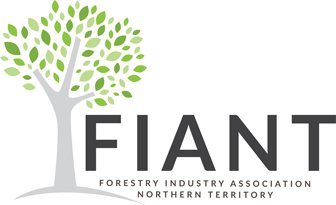SLAB HUT LAUNCH: ECONOMIC ADVANTAGES
TO GROW LOCAL FOR FOREST COMMUNITIES
HOW NATIVE TIMBERS CAN ADVANCE HABITAT CREATION AND A SUSTAINABLE RESOURCE
Kevin Harding, president, Australian Forest Growers, David Fisken, Central Victorian Farm Plantations, and Gib Wettenhall, secretary, Ballarat Region Treegrowers.
THE launch of a 21st century drop slab hut in the ImLaL bio-rich plantation at Ballarat, Vic, marks the first project completed under Responsible Wood’s community grants initiative.
The ceremony, organised by Ballarat Region Treegrowers, the local branch of the Australian Forest Growers, was attended by more than 60 visitors and project sponsors on March 26.
The community grants program seeks to support regional and rural Australian communities to connect with Responsible Wood locally-certified forests. Specifically, the small grants program is designed to support local communities better access or experience their local forests.
Standing in a clearing within the 15 ha plantation, the drop slab hut will be a focus for meetings, shelter and storage and demonstrates in a practical way how eucalypts and other native timbers can advance habitat creation, while offering sustainable resources for human use.
In building the hut, Ballarat Region Treegrowers and wood craftsman Lachlan Park followed three organising principles – going local, slow and carbon low. The timbers were from largely ‘unsung’ common native trees, grown by local farm foresters.
Species include sugar gum (Eucalyptus cladocalyx) for the hut’s frame, messmate stringy bark (E. obliqua) for the drop slab walls and black wattle (Acacia mearnsii) for floor boards and the hut’s rolling doors.

Topping off the hut.. Ken King, chair of Eucalypt Australia (left) and wood craftsman, Lachlan Park.
Secretary of the Ballarat Region Treegrowers Gib Wettenhall said there was an increasing recognition that going local brought a comparative economic advantage.
“A place-based approach offers authenticity and a chain of custody back to the provenance of whatever you are producing,” Mr Wettenhall said.
“Making authentic local products demands in many ways a return to craftsmanship. The birth of the industrial era 200 years ago heralded the arrival of mass production and long distance external value
chains – both deadening to individual expression.”
Like the artisans of old, slab hut builder Lachie Park is a highly skilled and dedicated craftsman who chooses to work on his own with green wood.
He says using wood the old, slow ways involved felling a tree and working with it green on the spot to craft a boat, barn or Japanese temple of beauty … all done alone or in a small team with mostly inexpensive tools and without a battalion of expensive middle men. Pegging posts and beams together allowed for movement and shrinkage.
Lachie Park came to the project with the idea of updating the uniquely Aussie invention in hut building – the drop slab hut. He was not seeking to replicate the old miners and cattlemen’s huts of the high plains, rather he was bringing his full range of skills and modern technology to bear in reframing the drop slab hut technique, so that it’s updated and fit for purpose for the 21st century.
Choosing unprocessed natural products – such as wood and the granite foundation stones – further reduces embedded energy.
“In a paradoxical way, the granite foundation stones help our drop slab hut sit lightly on the earth,” Lachie said. “Unlike concrete, no energy-sapping processing is involved, nor ravaging of the world’s river sand deltas.”
Principal sponsors for the project are IFA/AFG, Eucalypt Australia, Lal Lal Wind Farms, Lal Lal Catchment Landcare Group, SUVO Minerals Australia, Responsible Wood, and Hancock Victorian Plantations.
Established in 2010 as a demonstration site, the ImLaL plantation has a biodiverse core replicating the original natural forest with species diversity of more than 40 plants and five structural layers, once found in swamp woodland.
Clumps of commercial forestry trees, such as Otway and Sydney blue gum, bulk out the biodiverse core not only optimising biodiversity, but providing resources to the landholder for farm use and income diversification.
The aim is to develop a sustainable tree-growing model that integrates conservation and production, building resilience into both the landscape and the landholders.











